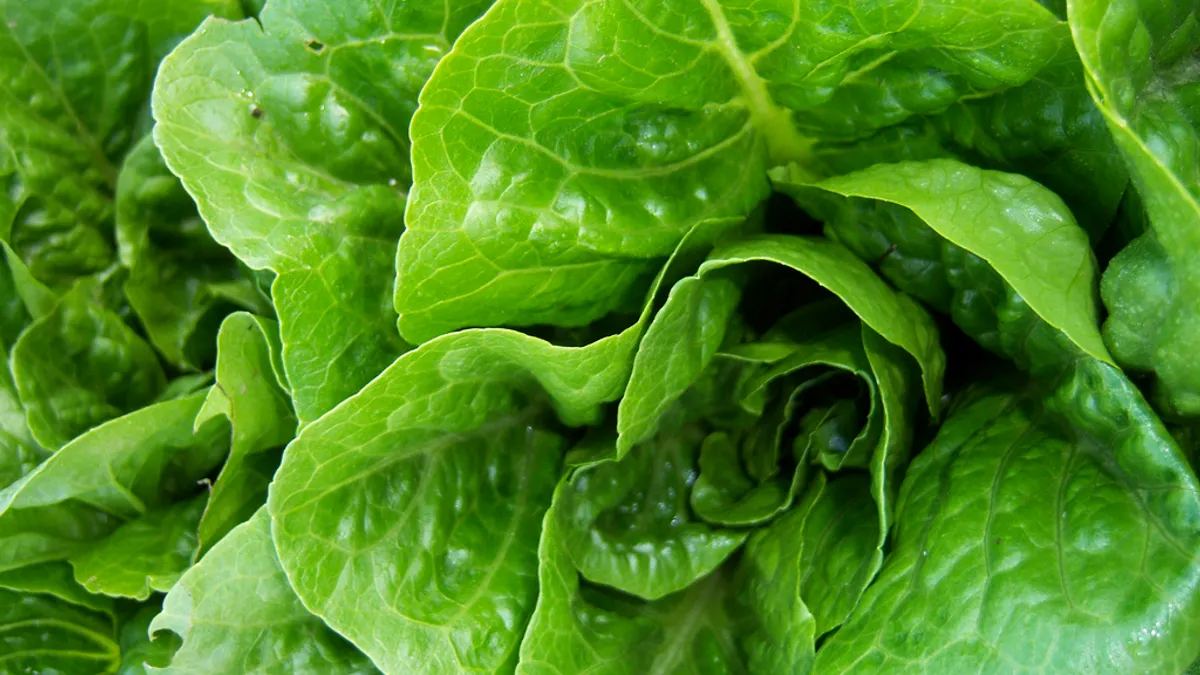Dive Brief:
- 80 Acres Farms is building a fully automated, 150,000-square-foot indoor farm in a Cincinnati suburb. The company claims it is the first of its kind in the U.S. The initial phase of the project is expected to be completed later this year, with three additional phases planned for the initial site.
- The farm will include grow centers that produce specialty greens — including culinary herbs, microgreens, cherry tomatoes, cucumbers, peppers and kale — year-round. The farm is automated from seeding to growing to harvesting, with personnel managing the facility.
- The produce will supply Whole Foods Markets, Dorothy Lane Markets, Jungle Jim's International Market, U.S. Foods and other retailers and distributors.
Dive Insight:
80 Acre Farms isn’t the first vertical farming operation to work within the supermarket industry. Bright Farms contracts with retailers across the country, while Gotham Greens sources vertically farmed greens to retailers in New York and Chicago. Target, H-E-B and Whole Foods have also experimented with the technique.
But 80 Acres claims to be the first fully automated farm, thus adding a layer of efficiency to a process known for being very costly. According to Grand View Research, the global vertical farming market is expected to reach $9.9 billion by 2025 at a compound annual growth rate of 22.4%.
When it’s completed, 80 Acres Farms will feature robotics, artificial intelligence, data analytics, and around-the-clock monitoring sensors and control systems to optimize every aspect of growing produce indoors, the company said in a news release. Mike Zelkind, co-founder and CEO of 80 Acres Farms, noted the vertical farm will “deliver proof that the concept can be commercially scalable, higher-yielding and profitable.”
Vertical farming has been on a growth trajectory as grocers (and their consumers) increasingly embrace locally grown produce. The Produce Marketing Association reports local food sales totaled about $12 billion in 2014, up from $5 billion in 2008. The USDA predicts the market value for locally produced food could hit $20 billion by 2019.
In addition to meeting demand, there are plenty of other advantages that come with vertical farming. It provides an opportunity to save on rising freight costs. It also claims to be safer, yielding crops that are less exposed to contamination and pesticides. As they operate year-round, these farms are also more productive. And, the technologies in 80 Acres' facility should be able to adjust on a dime to meet consumer demands.
The technologies should also allow for this facility to serve as an active laboratory for automation, providing insights on how to yield greater efficiencies in agriculture while perhaps improving access to produce. Based on this prototype, the company says it plans to expand the concept throughout the country.
Advantages aside, that’s a lofty goal when considering that vertical farming is much more expensive to start and operate than traditional agriculture. This project, for example, is expected to cost $10 million and $15 million initially. There is also a limit of crops available from the facility (notably missing are corn and soybeans, for example).
Another challenge is in bridging the divide between tech and farming. Automation is making its way into every industry, but few industries are as personal as food. As more grocers turn to storytelling as a differentiator, robots are likely a harder sell than farmers.












